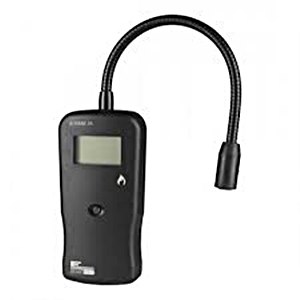GAS DETECTOR
Gas is a widely used clean fuel today, but it can pose significant dangers if not handled properly. The most advanced and safest solution to protect gas systems is through the use of gas detectors and gas leak detection devices.
1. What is a Gas Detector?
A gas detector, also known as a gas sensor, is a device designed to detect the presence of gas in an area, typically as part of a safety system. These devices are used to detect leaks of gases or industrial gases and can communicate with control systems to automatically shut down processes if necessary.
Gas detectors may emit an alarm sound to alert operators in the area of a leak, providing them with an opportunity to evacuate. These devices are crucial because many gases can be harmful to organic life, including humans and animals.
Gas detectors are used to detect flammable, combustible, and toxic gases, as well as oxygen depletion. They are widely used in industries and can be found in locations such as oil drilling platforms to monitor production processes and in emerging technologies like photovoltaics. They can also be used in firefighting.
2. Are Gas Detectors Really Safe?
In principle, gas leak detectors, or gas detectors, are electric plug-in or battery-operated devices. They must be installed 1-1.5 meters away from the gas tank to ensure safety and placed 20-30 cm above the ground since gas leaks tend to flow downward. However, it cannot guarantee 100% safety for users. When the device is plugged near a gas leak, the likelihood of an explosion is high.
Currently, there are two types of gas detectors on the market. One is a standalone alert device, typically a small, hand-held box, which is often used in households and easily mounted on the wall.
These devices are truly effective in situations where there is no human supervision, such as in industrial areas, warehouses, gas stores, etc. When detecting a gas leak, the device will alert the alarm so that technicians can be quickly alerted.
3. How to Install and Operate a Gas Detector
❖ Installation:
- Remove the front panel of the device with a front screw.
- Connect the 220V power cable to the N & L connections.
- In case of using the automatic gas lock function using a solenoid valve, connect N to (3), one end of the solenoid valve connects to N, and the remaining end connects to (4).
- Securely install the device on the wall using the 2 screws provided. For optimal effectiveness, install the alarm device near the source of gas leaks, about 20 to 50cm away from the gas tank and 20 to 30cm above the floor or kitchen cabinet.
❖ Operation:
- For the first time after supplying 220V power, the device will automatically recognize the surrounding environment. The power light and yellow light will illuminate for about 30 seconds, followed by a red light and a beeping sound.
- If there is a slight gas leak, the yellow light will alert, and you need to check for gas leaks again.
- If there is a serious gas leak, the red light will illuminate, and the alarm will sound.
- Immediately lock the gas valve tightly at the gas tank. Do not generate any sparks, such as starting a gas stove, lighting a fire, or operating electrical devices inside the house. Contact the gas supplier or a professional to thoroughly check and repair.
To truly ensure the safety of you and your family in your own home, we provide solutions for detecting gas leaks and automatically locking gas during abnormal incidents.
Contact us now at hotline +84 941234456 for consultation and ordering instructions.





